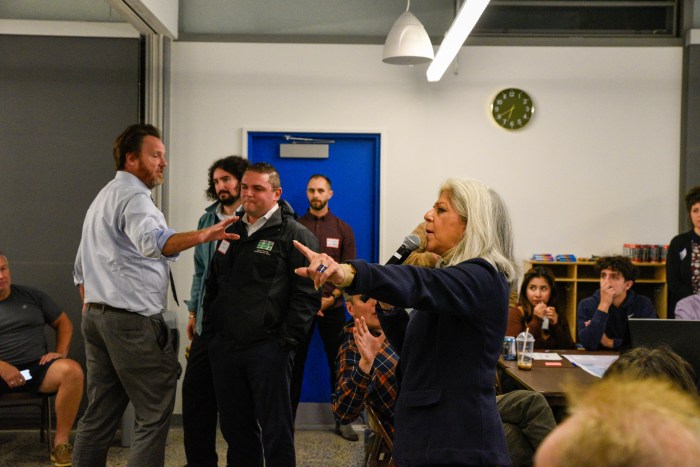Unlike the center of the island, where the Cross Island Parkway forms a clear border between Queens and Nassau County, along the north shore, it’s hard to tell where the city line is and with good reason – before 1898 there wasn’t any Nassau County.
When Queens voted to consolidate into New York City, what was then the eastern part of the county split off to form Nassau County. But the bordering areas – Douglaston, Little Neck and Great Neck, are tied in many ways.
This is the storied territory of F. Scott Fitzgerald’s The Great Gatsby. Great Neck is “West Egg” and the fabulously wealthy Manhasset beyond is “East Egg."
This swath of premium residential territory owes its existence to two major arteries, Northern Boulevard and the Port Washington line of the Long Island Rail Road.
The boulevard, actually State Route 25A, runs nearly the length of the island, having several local names including 21st Street, Jackson Avenue, Broadway and the North Hempstead Turnpike over the years. It generally follows the major commercial artery of earlier centuries.
Naturally, as the area developed, Northern Boulevard went from a winding dirt road to the string of restaurant rows and commercial strips we see today. Along this major thoroughfare, it’s easy to miss the transition from Queens to Nassau (it’s at Glenwood Street) because the commercial architecture is so similar.
As for the railroad, there are rather small commercial areas around most stations – it’s a commuter line after all and commuters just want to get home. The Great Neck station is a notable exception – with village of Great Neck Plaza growing up around it.
It’s the unique geography of the area that explains this.
The glacier that created Long Island made a 50-mile zig-zag of peninsulas, called Necks in old maps, separated by streams and wetlands along the north shore of western half of the island.
Flushing Creek is the most familiar of these streams to most Queen residents. About four and a half miles east, Alley Creek marks the dividing line between Bayside and Douglaston. Another three or so miles east, another valley separates Great Neck from the next land mass, Manhasset.
Though a railroad stretched from Hunters Point to Flushing by 1854, it wasn’t until 1866 that it was extended to Great Neck, which remained the final stop for another 30 years, until a steel trestle spanned the marsh to the east and the train reached Port Washington.
In fact, it was a competing trolley line, the New York & North Shore Traction Company, which helped make Northern Boulevard what it is today.
To anchor trolley tracks which stretched from Flushing to Roslyn and Mineola in Nassau County, the company paved the median with cobblestones. They also bridged Alley Creek with a draw bridge, so barge traffic pass.
The trolley company never did well and failed in 1920. The bus company that replaced it also failed in 1947 and was replaced by the Q12 (and the N20) bus.
But the trolley line helped establish Northern Boulevard as the commercial anchor of Little Neck. Block after block from 247th Street – the nominal dividing line between Douglaston and Little Neck – and the city line is lined with shops selling everything from fresh flowers to fresh bait, as well as a variety and number of restaurants worthy of a small city.
In Great Neck, it is Middle Neck Road that is the main line of commerce, running north from the station at Great Neck Plaza, past exclusive Kensington and Saddle Rock into super-exclusive Kings Point.
It also runs south past Russell Gardens and Thomaston to Northern Boulevard – where it becomes Lakeville Road.
On the western shore of Kings Point, you find the U.S. Merchant Marine Academy, on the estate of auto magnate Walter P. Chrysler, who reputedly took breakfast on his patio, observing through a telescope as the building bearing his name rose in Manhattan.
According to local legend, the sand for the concrete for both the Empire State and Chrysler buildings was collected from the Alley, and barged past the trolley bridge out of Douglaston.
Along with the commercial stretches of Middle Neck Road, Cutter Mill Road (named after Bloodgood Cutter, a prominent landowner and friend of Mark Twain) Grace Avenue and Station Plaza form a network of shopping and dining blocks hard to match anywhere.
Great Neck has the widest imaginable variety, from small and very exclusive shops, from gourmet restaurants to delis, to a Waldbaums supermarket in the upscale shopping center that also hosts the Great Neck Library.
It even boasts a Peter Luger steakhouse on Northern Boulevard, an eastern outpost of the world renowned Brooklyn eatery for nearly 50 years.
This stretch from Douglaston to Great Neck, the old gateway to Long Island’s “Gold Coast” offers a unique balance of suburban living – about a half hour from Manhattan by train.



































